-
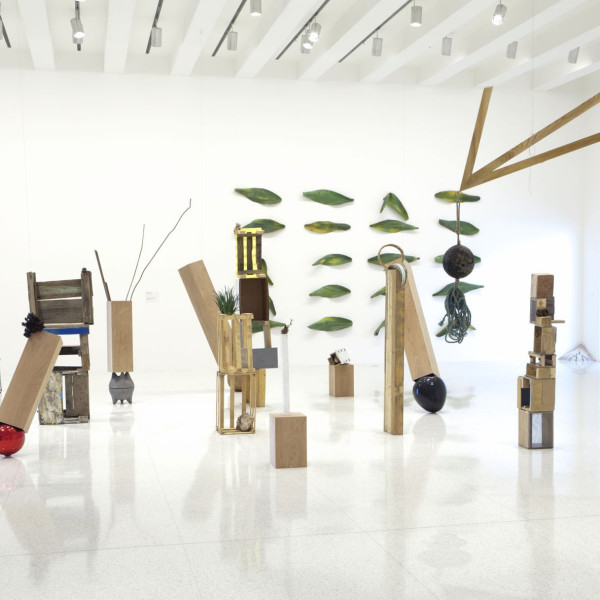
Abraham Cruzvillegas: The Autoconstrucción Suites, Haus der Kunst, Munich
"Autocontrucción" (auto-construction) is the term Abraham Cruzvillegas (born 1968) uses to describe his art, the roots of which lie in the improvised construction methods and techniques of his native Mexico City. In this first major survey of his artistic career to be presented in Europe it can be seen, how Cruzvillegas combines his dynamic sculptural language with natural materials and found objects, blurring the boundaries between art and craft and between industrial and manual production. For Cruzvillegas, the sculptural form is a process of change, action, solidarity, and transformation. Over the past decade, Cruzvillegas has created an impressive body of work that reflects his interest in the forms and matter surrounding Ajusco, a volcanic area south of the Mexican capital.
"Abraham Cruzvillegas: The Autoconstrucción Suites" is organized by the Walker Art Center, Minneapolis, MN, USA, and presented by Haus der Kunst.Major support for the exhibition is provided by the Andy Warhol Foundation for the Visual Arts. Additional support is generously provided by Nelly and Moisés Cosío Espinosa, the Rose Francis Foundation, Gabriela and Ramiro Garza, Eugenio Lopez, Leni and David Moore, Jr., Donna and Jim Pohlad, Mike and Elizabeth Sweeney, and Marge and Irv Weiser.
The exhibition at Haus der Kunst in Munich has been generously supported by Thomas Dane Gallery, London / Regen Projects, Los Angeles / Galerie Chantal Crousel, Paris / kurimanzutto, Mexico City
-
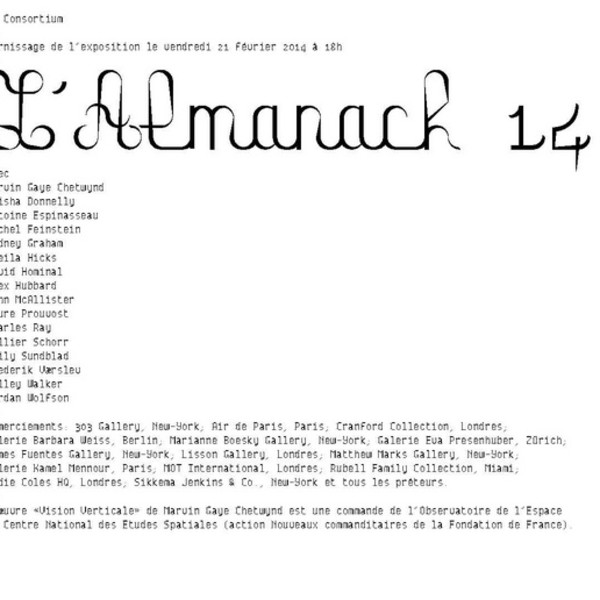
Kelley Walker: L'Almanach, Le Consortium, Dijon
L'ALMANACH 14
22 février - 1er juin 2014
MARVIN GAYE CHETWYND, TRISHA DONNELLY, ANTOINE ESPINASSEAU, RACHEL FEINSTEIN, RODNEY GRAHAM, SHEILA HICKS, DAVID HOMINAL, ALEX HUBBARD, JOHN McALLISTER, LAURE PROUVOST, CHARLES RAY, COLLIER SCHORR, EMILY SUNDBLAD, FREDERIK VÆRSLEV, KELLEY WALKER, JORDAN WOLFSON.JOHN McALLISTER (USA. Born 1973, lives in Los Angeles)
MARVIN GAYE CHETWYND (GB. Born 1973, lives in London)
FREDRIK VÆRSLEV (N. Born 1979, lives in Vestfossen)
COLLIER SCHORR (USA. Born 1963, lives in New York)
SHEILA HICKS (USA. Born 1934, lives in Paris)
ANTOINE ESPINASSEAU (F. Born 1986, lives in Paris)
JORDAN WOLFSON (USA. Born 1980, lives in New York)
DAVID HOMINAL (F. Born 1976, lives in Amsterdam)
TRISHA DONNELLY (USA. Born 1974, lives in New York)
CHARLES RAY (USA. Born 1953, lives in Los Angeles)
RODNEY GRAHAM (C. Born 1949, lives in Vancouver)
EMILY SUNDBLAD (SW. Born 1977, lives in New York)
RACHEL FEINSTEIN (USA. Born 1971, lives in New York)
ALEX HUBBARD (USA. Born 1975, lives in New York)
LAURE PROUVOST (F. Born 1978, lives in London)
KELLEY WALKER (USA. Born 1969, lives in New York)
Remerciements: 303 Gallery, New-York; Air de Paris, Paris; Cranford Collection, Londres; Galerie Barbara Weiss, Berlin; Marianne Boesky Gallery, New-York; Galerie Eva Presenhuber, Zürich; James Fuentes Gallery, New-York; Lisson Gallery, Londres; Matthew Marks Gallery, New-York; Galerie Kamel Mennour, Paris; MOT International, Londres; Rubell Family Collection, Miami; Sadie Coles HQ, Londres; Sikkema Jenkins & Co., New-York et tous les prêteurs.
-

Arturo Herrera: Adam, Public Art Installation, Linda Pace Foundation, San Antonio
The Linda Pace Foundation is proud to present a public artwork by Arturo Herrera titled Adam, a 2,500-square-foot wall painting located in downtown San Antonio.
The dramatic public artwork, which is more than 25 feet high and 98 feet wide, is the largest wall painting produced by the artist in the United States. Adam embraces and fulfills the Linda Pace Foundation's mission for the community to experience contemporary art in nontraditional settings.
"This installation advances San Antonio's growing reputation as a cultural center for innovation and creativity," says Maura Reilly, executive director of the Linda Pace Foundation. "We are honored that Arturo tailored this design specifically for us. Having a public art display by an artist of his caliber positions Adam as one of the city's newest attractions. Adam will inspire local residents, tourists, and also bring art aficionados to our city."
Herrera scouted San Antonio earlier this year looking for the consummate setting for Adam. He found the ideal spot in Main Plaza, a vibrant cultural hub for musicians, poets, artists, farmers markets and family activities.
"The inspiration for the wall painting Adam was about movement, the dynamism of abstraction, and a soaring energetic field, like Spring, when everything awakens," Herrera said. "The title Adam brings several images to mind: An earthbound beginning; the first individual human; humankind. It is a powerful and yet open-ended title that can convey multiple readings to the audience. The color red that I chose for Adam was intentional as red is the color associated with heat, power, physical energy and celebration. Coincidently, red was Linda Pace's favorite color, both for its physical and spiritual qualities."
The Linda Pace Foundation is funding the project and it will remain prominently displayed on the side of the Frost Bank Parking Garage at the northwest corner of Commerce Street and Main Avenue for three years, through December 2016.
Arturo Herrera was born in 1959 in Caracas, Venezuela. He received his BFA from the University of Tulsa in 1982 and his MFA from the University ofIllinois at Chicago in 1992. He lives and works in Berlin. Arturo Herrera has developed a multilayered body of work that includes collages, sculptures, photographs, cut felt pieces and wall works. Herrera uses a fragmented language-whose lingering references range from popular culture to art history-to decontextualize inherent narratives without eradicating the coded referentiality of the image. The resulting works shift in between the explicit and the implicit. A pliability of meaning is played out through the ambiguity of figurative and abstract forms. These forms do not enforce a specific message. Instead, they address the fragmentation and recomposition of mass-culture elements to explore the impact of the adulterated language of abstraction into the collective gaze.
The Linda Pace Foundation is committed to the charitable vision of its founder. Guided by the donor's conviction that contemporary art is essential to a dynamic society, the Linda Pace Foundation fosters the creation, presentation, and understanding of innovative expression through contemporary art. Grants support the operation of Artpace, CHRISpark, the public exhibition of Pace's contemporary art collection, and the work of contemporary artists.
-

Akram Zaatari: ALL IS WELL, Agnes Etherington Art Centre, Kingston University, Ontario
The Art Centre is pleased to present the first Canadian solo exhibition of works by Akram Zaatari, one of Lebanon's most respected contemporary artists. Zaatari's art practice involves unearthing, collecting and re-contextualizing a wide range of documents that confound notions of history while recognizing the ways in which these documents are uneasily situated as evidence of tense political and cultural conditions. The exhibition will juxtapose several video and photography projects that explore what Zaatari calls the "dynamics that govern the state of image-making in situations of war." In this exploration, Zaatari employs letter writing as a device, a mode of address and a research method to situate his works in a fractured political context while offering intimate and particular ways of knowing the event.
Born in Saida, Lebanon, in 1966, Akram Zaatari is an artist, curator and writer living in Beirut. He is one of the co-founders of the Arab Image Foundation (www.fai.org.lb) a non-profit organization whose mission is to collect, preserve and study photographs from the Middle East, North Africa and the Arab diaspora. His work has been featured in discourse-setting exhibitions such as Documenta 13 in Kassel, Germany and the Sharjah Biennial, and was on view at the Museum of Modern Art (MoMa) in New York from mid-May to September 2013. Zaatari also represented Lebanon at the Venice Biennale in 2013. His Canadian premiere immediately follows these two high-profile engagements.
This exhibition is curated by Victoria Moufawad-Paul . A publication with essays by the curator, Sylvie Fortin and Judith Rodenbeck accompanies the exhibition.
Victoria Moufawad-Paul
This exhibition is generously supported by the Ontario Arts Council's program for Culturally Diverse Curatorial Projects, the George Taylor Richardson Memorial Fund and the Chancellor Dunning Trust Lecture, Queen's University.
-
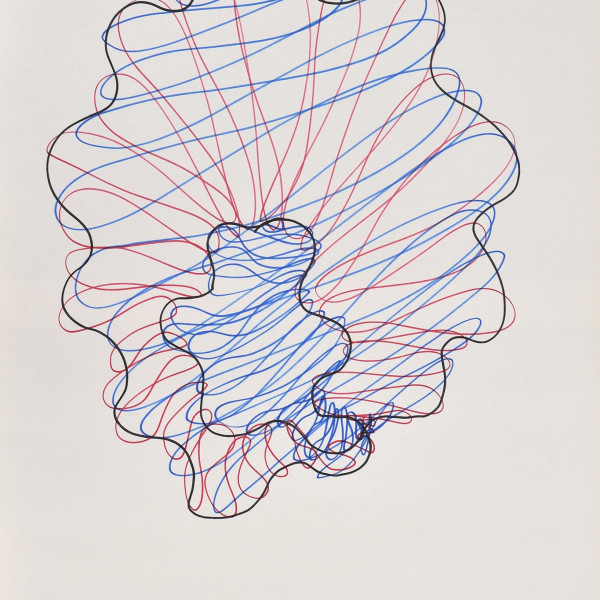
Jean-Luc Moulène: Endwards, Extracity, Antwerp
On 12 December 2013, Extra City Kunsthal presents ENDWARDS, a project by French artist Jean-Luc Moulène. Articulated around three new productions, the exhibition includes a condensed retrospective, exploring genealogies for the new works and recurrent questions in the artist's practice. ENDWARDS looks at the coextensive operations that configure Moulène's objects and images, at the ways in which these intersect time and materiality, erosion and resistance: at the connections between 'building a body for oneself', as the artist defines the focal point of his work, and his radical avoidance of a signature style. In sculpture as in photography, Jean-Luc Moulène constructs and documents situations akin to Zeno's paradoxes: that disunite media, genres and their strictures, or that confuse authorship, delegation and 'co-production' - with materials and circumstances.
Among the new commissions, the sculptural assemblage Usure (Wear) references building techniques in pre-Colombian architecture. One explanation for the robustness of megalithic walls such as that of Sacsahuaman in Cusco, Peru, is that systems of cranes and pulleys, and considerable amounts of physical work, were employed to rub the stones against one another until they became seamlessly joined, making unnecessary the use of mortar. Usure applies this method to three life-size sculptures: through distinctly oriented rotating and swinging motions, a male bust, a female figure and a vulture abrade each other into figurative and temporal appeasement. Somewhere between a collage of antagonistic positions and the metonym (or residue) of a convulsive history, Usure cuts across museological and political spaces: it moves from discrete objects, each with its caption and fixed role in narratives of 'identity', to collapsed distinctions and crossbred figures, both uneasy and stilled.
The maquette Pleasure Dome departs from observations of architectural ruins in Greece - new or old, quasi-mythological or late-capitalist, enshrined as relics or abandoned to the elements. Made of as many minute bricks as will be required by the future construction of the actual work (to measure 3,20 meters in diameter), this model of a ruin has an intact dome as inner surface, sheltered on the outside by a jagged, broken geometry of bricks. The two sides of the object articulate an imaginary story of preservation and ravage, where the contemplative, conciliatory purpose of the dome contrasts with the inscrutable force that ripped the dome out from an ampler construction, whose outline or function we can no longer discern. As postscript to the imaginary narrative activated by the model, the work is to be immersed in the sea for an undetermined duration: thePleasure Dome will be finished only once its angular, toothed brickwork will have been smoothened by the mechanical and chemical impact of the waves.
A spatial drawing completes the trio of scalar relations that structure the exhibition. Dessin asservi (Subordinated Drawing) reproduces at the scale of Extra City Kunsthal's main hall the intersection of a sphere and an ellipsoid, registering on walls, ceilings, floors and pillars. The work makes use of a simple gardening technique - transformed, but not exalted, by volumetric expansion -, and echoes Moulène's long-standing interest in the sinuous dynamic of knots and Borromean rings. Taking possession of the entirety of the space available to it and theoretically capable of extending its marks beyond it, the work is a homeless drawing and the locus of a permanent inadequacy. Dessin asservi is a site-resistant (as opposed to site-specific) visualization: there is no space where the drawing could indeed fit, no space that would not have a reductive effect on its centrifugal accelerations.
The exhibition includes La Vigie (The Lookout Man) (2004-2011) - a monumental photographic essay in botanical situationism, surveying the growth of the particularly resilient Paulownia Tomentosa in the cracks of sidewalk and buildings in the neighbourhood of the Ministry of Economy, Industry and Employment in Paris. The images reveal an ever-changing landscape of urban gestures, from traces of children's play to the physical evidence of anti-terrorist vigilance. Also featured are Ordre en tas (Order in a Heap), relating an attempt to organize geometrically found materials and the chromatic standardization of BIC ballpoint inks; or Model for Sharing, Moulène's retort to the artificial, debilitating distinction between the 99 and 1 per cent in recent debates on economic and social justice, as well as newspaper projects such as Le Louvre or Objets de grêve (Strike Objects).
ENDWARDS will be accompanied by a cinema program, curated in collaboration with film historian Gawan Fagard (University of Munich). Divided between presentations of video works in weekly rotation and five special screenings that respond to different themes in the exhibition, such as 'Archaeology' or 'Assemblage', the program includes work by filmmakers such as Kenneth Anger, Hiroshi Teshikahara, Kyle Armstrong, Patricio Guzmán, Anand Ghandi, Duncan Campbell, Clemens von Wedemeyer, Beatrice Gibson, Shahryar Nashat, Akram Zaatari and many others.
Curated by Mihnea Mircan.
The exhibition is made possible by the generous support of Galerie Chantal Crousel, Galerie Greta Meert, Middelheim Museum Antwerp, Thomas Dane Gallery and ERG Brussels.
With thanks to Chantal Crousel and Marie-Laure Gilles, Greta Meert and Frédéric Mariën, Sara Weyns, Martine d'Anglejan-Chatillon, Corinne Diserens, Kris Kimpe, Marie-Céline Chevassu, Berten Jaekers, Boris van Heerden, Sofie Dederen, Chris Sharp, Yasmil Raymond and Sophie Berrebi.
Jean-Luc Moulène (1955) lives and works in Paris. Presentations of his work were organized at Beirut Art Center (2013), Modern Art Oxford (2012), Dia Art Foundation, New York (2011-2012), Carré d'art - Musée d'art contemporain, Nîmes (2009), Culturgest, Lisbon (2007), Jeu de Paume and Musée du Louvre, Paris (2005). He has been featured in group exhibitions at Sharjah Biennial, CAC Brétigny, Brétigny-sur-Orge, Witte de With, Rotterdam, Venice Biennial and Documenta 10, Kassel. Moulène is represented by Galerie Chantal Crousel, Paris, Galerie Greta Meert, Brussels, Thomas Dane Gallery, London, Galerie Pietro Spartà, Chagny, and Galeria Désiré Saint Phalle, Mexico City.
-
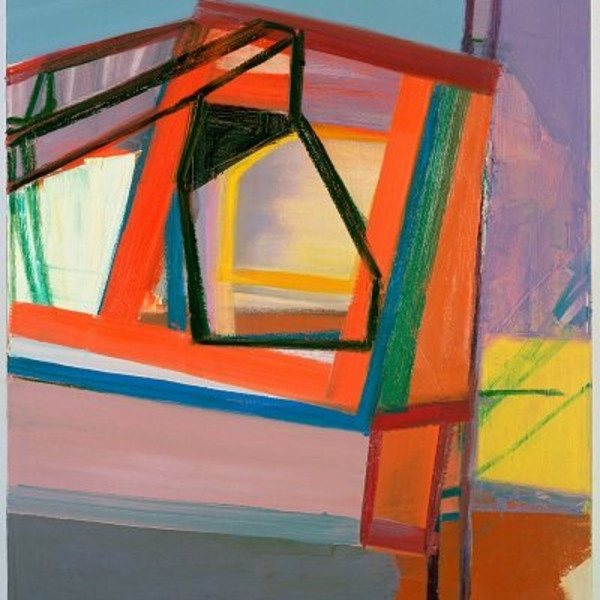
Amy Sillman: one lump or two, ICA Boston
Painting is perhaps more vital today than any time since the heyday of the New York School in the late 1940s and 1950s, and Amy Sillman one of its most influential practitioners and thinkers. Through her dramatic shifts in style, sophisticated writings, and her role as head of the painting program at Bard College’s prestigious MFA program, she has proven that the basic building blocks of 20th-century painting are as relevant as ever.
Amy Sillman: one lump or two—the artist’s first museum survey—follows her development as an artist from the mid-1990s to the present, as her work moved from drawing to painting to moving images, and from figuration to abstraction. Featured are more than 90 works, including drawings, paintings, ‘zines (which she calls “a chance to present one’s own epiphanies”), and the artist’s recent forays into animated film.
Sillman’s early works, characterized by cartoon lines and a riot of pastel and acid hues, move effortlessly from figure to landscape, playfully and often humorously exploring problems of physical and emotional scale with observations that are both wry and revealing.
In the mid-2000s, Sillman took a different track as she started to draw couples from life in intimate pencil, ink, and gouache drawings that she then translated from memory into paintings with bold brushstrokes and abstract blocks of rich color. These paintings, with their angular forms and unexpected palettes, proved to be a reinvigorated form of 21st-century abstract expressionism.
As artists started to question painting’s role in an age of reproduction and mass media, many looked to photography. Sillman turned instead to the diagram, injecting into her lush, abstract fields of color the sort of stringent line so often used to communicate complex information. Most recently, Sillman has questioned whether painting needs paint at all, making drawings on her iPhone that she transforms into movies that bring back the neurotic figures of her early images while delving further into the current roles of abstraction, color, and the diagram.
“Sillman is central to the resurgence of public and critical interest in painting and abstraction today,” says Jill Medvedow, Ellen Matilda Poss Director. “This exhibition is a long-awaited opportunity for a close encounter with the emotion, awkwardness, energy, and sheer beauty of Amy Sillman’s art.”
-
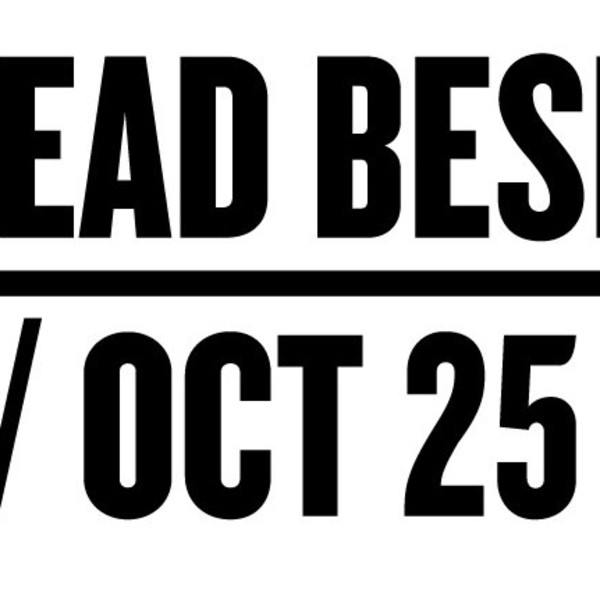
Walead Beshty: Fair Use, The Power Station, Dallas, Texas
DALLAS-The Power Station is pleased to announce Walead Beshty: Fair Use. The exhibition consists of sculptures fabricated at Cerámica Suro in Guadalajara, Mexico, loose leaf newspaper collages collected daily during site visits and production, an iteration of the work The Continuous Presents of Futures Past (Post-Apocalypses 1959-1985), a 24-hour screening of post-apocalyptic films from the Cold War era, and wallpaper derived from the movie poster art of the films.
The sculptures are combined elements of cast off remnants from Cerámica Suro's varied past production of both functional ceramic ware and past artist's editions. The combined elements are glazed with corresponding colors to site specific frescos painted by Jose Clemente Orozco completed in 1939 at the chapel at Hospicio Cabañas in Guadalajara, and murals by Pierre Bourdelle at the Portico of Mexico at Fair Park in Dallas. A future installation will take place at the Hospicio Cabañas opening February 1st, 2014. There, Beshty will lay a mirrored glass floor throughout the chapel reflecting the frescoes above. As viewers move through the space the glass will crack under foot exposing the residue of circulation and create an echo of the viewers to the historical site.
The newspaper collages, installed on wooden spines, use the complete newspapers of Express Guadalajara, La Prensa Jalisco, Metro, and other local media as a starting point. Murders, rapes, and prostitution advertisements make up the bulk of the content. The depicted violence brings to mind the densely composed, allegorical subject matter of the social realist murals painted by Orozco almost 75 years earlier.
The work The Continuous Presents of Futures Past (Post-Apocalypses 1959-1985, Spanish), 2013 is comprised of 14 post-apocalyptic themed films from the Cold War era. This is the seventh iteration of the work, which originated at the Hammer Museum, Los Angeles (as a part of Walead Beshty: EMBASSY!: a dismal science waiting room), and traveled to ZKM, Karlsruhe (as a part of Between Two Deaths), The Institut im Glas, Berlin, the Kadist Foundation, Paris (as a part of The Backroom), the Whitney Museum of American Art, New York (as a part of the 2008 Biennial Exhibition), and Thomas Dane Gallery, London (as a part of Walead Beshty: Travel Pictures). This iteration includes the added elements of Spanish language subtitles and an accompanying photo-montaged wallpaper consisting of movie poster art from each of the films.
-
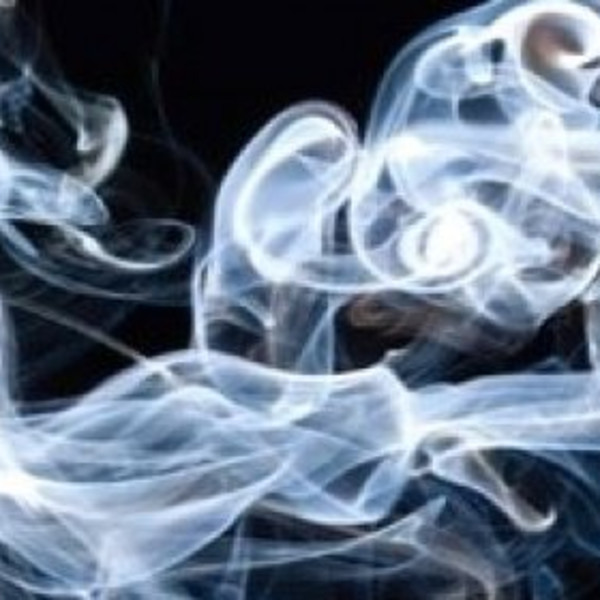
Alexandre da Cunha: Decorum, Musée d'art Moderne de la ville de Paris
The Musée d’Art moderne de la Ville de Paris is highlighting the art of textiles with the exhibition Decorum. This exhibition will feature over a hundred rugs and tapestries created by modern (Francis Bacon, Pablo Picasso) as well as contemporary artists (Dewar & Gicquel, Vidya Gastaldon).
Decorum is a chance to discover the often unknown ventures into weaving by both major artists of the twentieth century, as well as lesser known artists (such as Guidette Carbonell). The exhibition also includes anonymous works from different time periods and regions in order to underscore meaningful similarities and differences.
The virtues of carpets and tapestries are numerous: visual and tactile, artistic and functional, they are also readily transportable (Le Corbusier qualified the tapestries as 'Muralnomad'). They transcend the usual limitations of decorative arts and interior design.Until the late 19th century, painters like Lotto, Holbein and Delacroix restricted themselves to drawing tapestry cartoons or including Oriental carpets in their pictures. Over the course of the 20th century, however, the European avant-garde revolutionized textile art and practice; artists began weaving their own rugs, inspired by works from earlier periods or drawing upon ethnic and geometric motifs.
Since the 1960s, carpets and tapestries often bear a political or feminist message. Beginning with the new millennium, they have grown in popularity. Young contemporary artists like Caroline Achaintre and Pae White are now producing original works that blend tradition, non-Western influences and modernity, for instance through the use of innovative techniques such as digital weaving.
This exhibition challenges the preconceived notion of tapestry as a minor or anachronistic art form. The exhibition also recalls a little known aspect of the history of the MAM that had its own Textile Art department in the 1980s.
As guest artistic director, theLondonbased artist Marc Camille Chaimowicz has designed the exhibition in collaboration with architect Christine Ilex Beinemeier. The ambient music (“furnishing music”) serving as the exhibition’s audio backdrop is a playlist proposed by aesthetic lecturer Jean-Philippe Antoine.
The richly illustrated catalogue is co-published with Skira-Flammarion (with graphic design by Huz&Bosshard). -
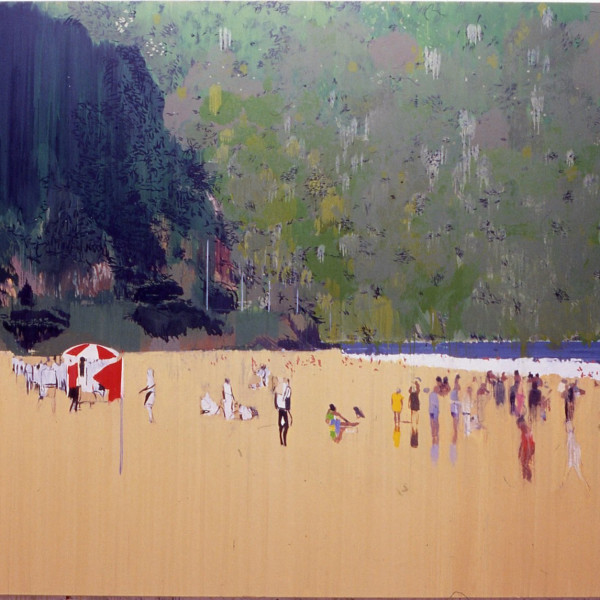
Hurvin Anderson: Reporting Back, Ikon Gallery
Ikon presents the most comprehensive exhibition to date of paintings by British artist Hurvin Anderson (b.1965), evoking sensations of being caught between one place and another, drawn from personal experience. It surveys the artist's career, including work made shortly after he graduated from the Royal College of Art, London, in 1998, through the acclaimed Peter's Series (2007-9), inspired by his upbringing in Birmingham's Afro-Caribbean community, and ongoing works arising out of time spent in Trinidad in 2002. Filling Ikon's entire exhibition space, Reporting Back traces the development of Anderson's distinct figurative style.Anderson arrived on the international art scene with Peter's Series, a number of paintings depicting the interiors of barbers' shops, in particular one (owned by Peter) visited by Anderson with his father as a boy. A converted attic serving as an improvised salon for conversation as well as for cutting hair, this was a social retreat vital for many male members of the local Caribbean community; a place he equates to an English garden shed. By painting this subject, the artist was exploring a formative psychological moment, and by returning to it pictorially he takes us with him on a journey that is as sentimental as it is a faithful representation.It is significant that often Anderson depicts sites of leisure, where the mind is usually free to wander. He talks often of being in one place "but actually thinking about another", a fact of his life arising out of his cultural background. He grew up in the English Midlands preoccupied with visions of a warmer, more colourful 'other country' and from this experience has developed a way of seeing which he describes as "slightly outside of things". Later paintings of the Caribbean embody this kind of perception with verdant green colour glimpsed behind close-up details of the fences and security grilles found in residential areas, or an expanse of water or desolate approach separating us, the viewer, from the point of interest in the centre ground. This method of composition signifies at once a kind of social and political segregation, a smartness with respect to the business of picture making, amounting to a kind of semi-detached apprehension of what Anderson encounters.A major monograph illustrating works from across the artist's career will be published to accompany the exhibition, including texts by Jennifer Higgie, writer and co-editor of Frieze. -

Alexandre da Cunha: The World Turned Upside Down - Buster Keaton, Sculpture and the Absurd, Warwick Art Centre
Curated by Simon Faithfull and Ben Roberts, 'The World Turned Upside Down' places the work of over twenty international artists working in film, sculpture, installation art and performance in direct relation to Buster Keaton's films to track a lineage from the melancholic and at times anarchic comedy of Keaton to the dry wit of conceptual practice.
By examining Keaton's approach to art through making - the processes of failure, risk and repetition - the exhibition also establishes a nuanced presentation of the developmental relationship between slapstick film, sculpture and performance and highlights parallels within modern and contemporary sculptural practice which continue to resonate today.
The exhibition features work of conceptual artists working in film, photography, sculpture, installation art and performance; by historical and contemporary, established and emerging artists. These include Bas Jan Ader, Angus Braithwaite and Fred Lindberg, Marcel Broodthaers, Alexandre da Cunha, Simon Faithfull, Peter Fischli David Weiss, Brian Griffiths, Jeppe Hein, Sofia Hulten, William Hunt, Tehching Hsieh, Hayley Newman, Roman Signer, Richard Wentworth, Richard Wilson, John Wood and Paul Harrison.
'The World Turned Upside Down' is a Mead Gallery exhibition which has been supported by The Henry Moore Foundation.
Page
70
of 75
